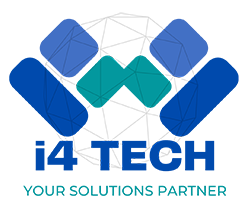SaaS vs. Custom Development: Which is Best for Your Business?
In today’s digital-first business environment, every organization needs reliable software to operate efficiently, serve customers, and stay ahead of the competition. But when it comes to choosing the right solution, businesses are often faced with a big decision: Should you go with a SaaS (Software as a Service) product or invest in custom software development?
This choice can impact your costs, scalability, flexibility, and even long-term business strategy. Let’s break it down.
1. What is SaaS?
SaaS refers to ready-made software hosted in the cloud and accessed through the internet. Examples include Slack, Zoom, QuickBooks Online, and Salesforce.
Advantages:
- Lower upfront cost – Pay a subscription fee instead of large development costs.
- Quick to implement – Start using immediately after signup.
- Maintenance included – Updates, bug fixes, and security patches are handled by the provider.
- Scalability – Upgrade your plan as your business grows.
Limitations:
- Limited customization – You adapt your processes to fit the software, not the other way around.
- Ongoing cost – Monthly or yearly fees can add up.
- Vendor dependency – You rely on the provider for uptime, security, and updates.
2. What is Custom Development?
Custom development means building software tailored to your business’s unique needs from the ground up.
Advantages:
- Tailored to your workflow – Designed to match your exact business processes.
- Scalability on your terms – Grow and adapt without depending on third-party restrictions.
- Data ownership – Your software, your rules, your database.
- Competitive advantage – Unique features can set you apart from competitors.
Limitations:
- Higher initial cost – Significant investment in design and development.
- Longer deployment time – May take months to build before you can start using it.
- Maintenance responsibility – You handle updates, bug fixes, and infrastructure.
3. How to Decide Between SaaS and Custom Development
Choosing the right path depends on your business’s size, budget, and goals:
| Factor | SaaS | Custom Development |
|---|---|---|
| Budget | Lower upfront cost; ongoing fees | Higher upfront cost; no recurring fees unless for maintenance |
| Timeframe | Ready in hours/days | Months of development |
| Customization | Limited | Full customization |
| Scalability | Vendor-dependent | Fully flexible |
| Control | Low | High |
| Data Ownership | Limited | Full |
4. A Hybrid Approach
Some businesses combine both. For example, using a SaaS CRM like HubSpot for marketing while developing a custom internal dashboard for operations. This approach balances speed, cost, and flexibility.
Conclusion
There’s no one-size-fits-all answer. If you need a quick, cost-effective solution with minimal management, SaaS might be best. But if your business has unique processes, long-term growth plans, or needs complete control, custom development could be the smarter investment.
The right choice is the one that supports your business goals — today and in the future.

